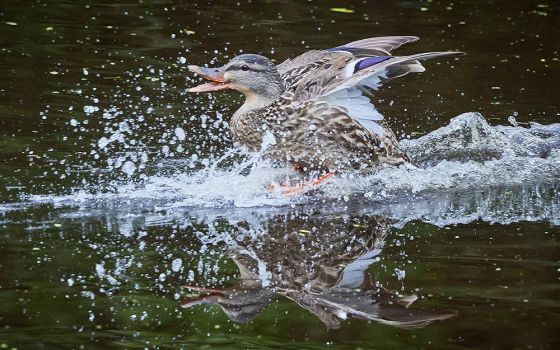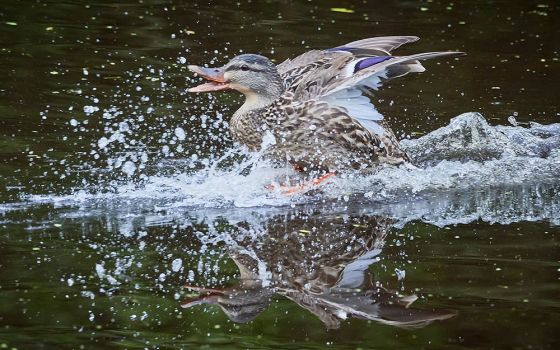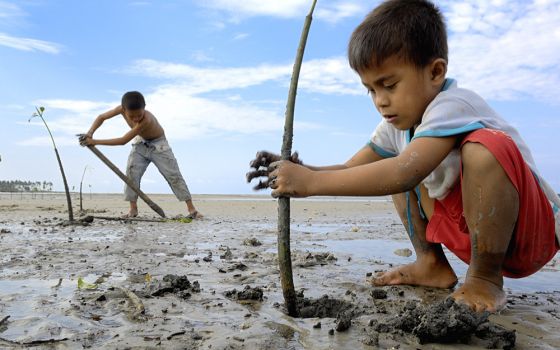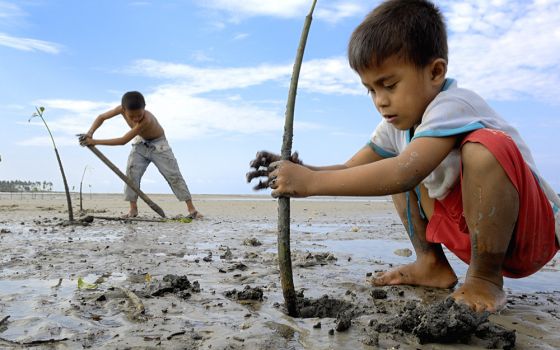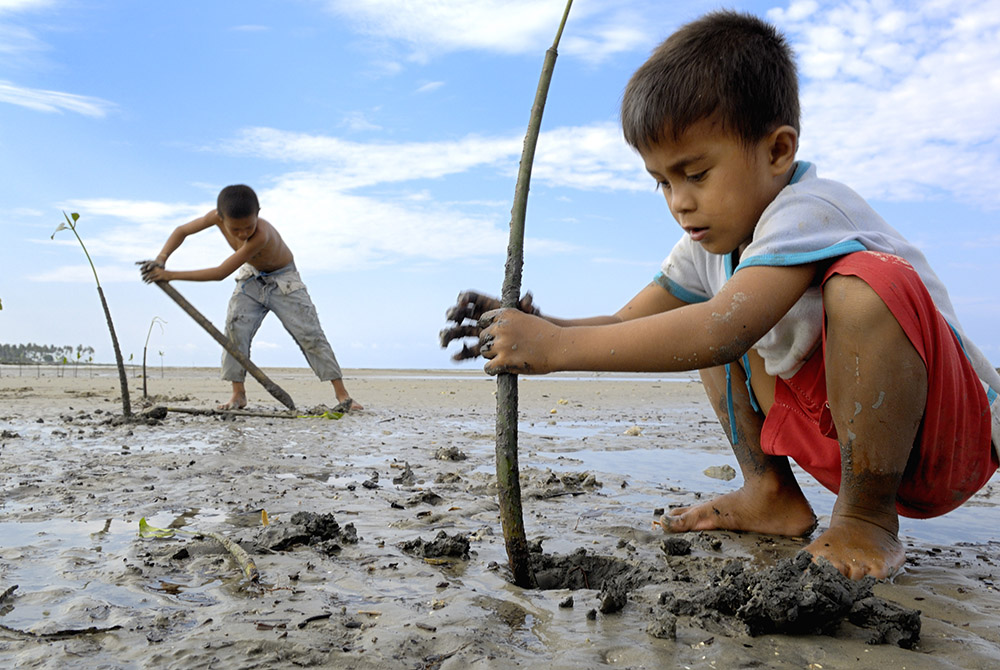
Jefrin Zendrato plants a mangrove seedling on a beach devastated by a tsunami. (Paul Jeffrey)
Editor's note: This Season of Creation, join award-winning photographer Paul Jeffrey for "Lens on Creation" as he examines the world through the lens of his camera and his faith. Sign up here to receive Jeffrey's reflections in your inbox every Monday, Wednesday and Friday from Aug. 31 to Oct. 4.
I met Jefrin Zendrato years ago, after a huge tsunami wiped out his village of Moawo on the remote Indonesian island of Nias. I was covering the aftermath of the disaster, and I found the little boy and his brother and father planting mangrove seedlings on a barren section of beach near their home. The tsunami had swept across the beach unhindered on its way inland. They explained to me that the mangroves could help create a buffer against giant waves in the future.
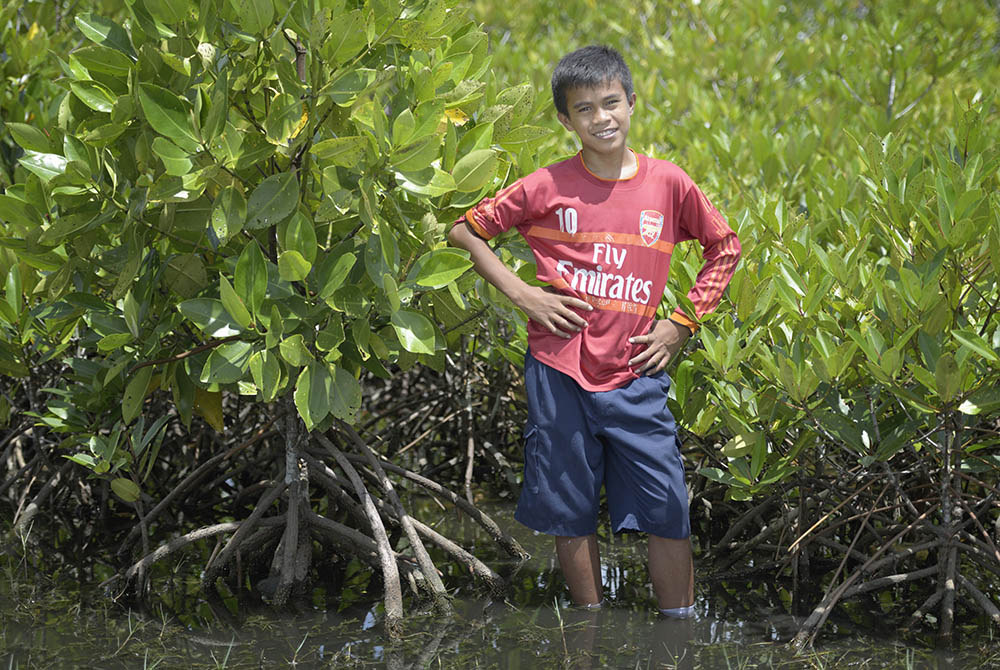
Years later, Jefrin Zendrato, 13, stands in the mangrove forest he helped plant. (Paul Jeffrey)
In 2014, for the 10th anniversary of the tsunami, I went back to Indonesia. When I got to Nias, I looked for Jefrin. The little boy was now 13. He didn't remember my visit, but he and his father walked me out to the beach where I'd photographed them sticking seedlings in the sand. It was now a veritable mangrove forest. They told me the mangroves have not only helped to protect the shoreline from erosion, but they've also attracted crabs and small fish, which have helped revitalize the local fishing industry. Because of the mangroves, people are eating better and have more disposable income.
We can heal the Earth. And when we do, we can have life, and have it more abundantly.
For reflection and action:
Mangroves soak up large amounts of carbon dioxide, a greenhouse gas, from the atmosphere and convert it to peat in swampy coastal areas that are both storm buffers and important breeding grounds for fish. Shrimp farming and coastal development are key threats. Take a look at a world map of mangroves. Where do they grow? What certification programs exist to help you determine that shrimp or other seafood you purchase does not harm mangroves?
[Paul Jeffrey is a founder of Life on Earth Pictures and lives in Oregon. You can follow him on Instagram.]
Advertisement




